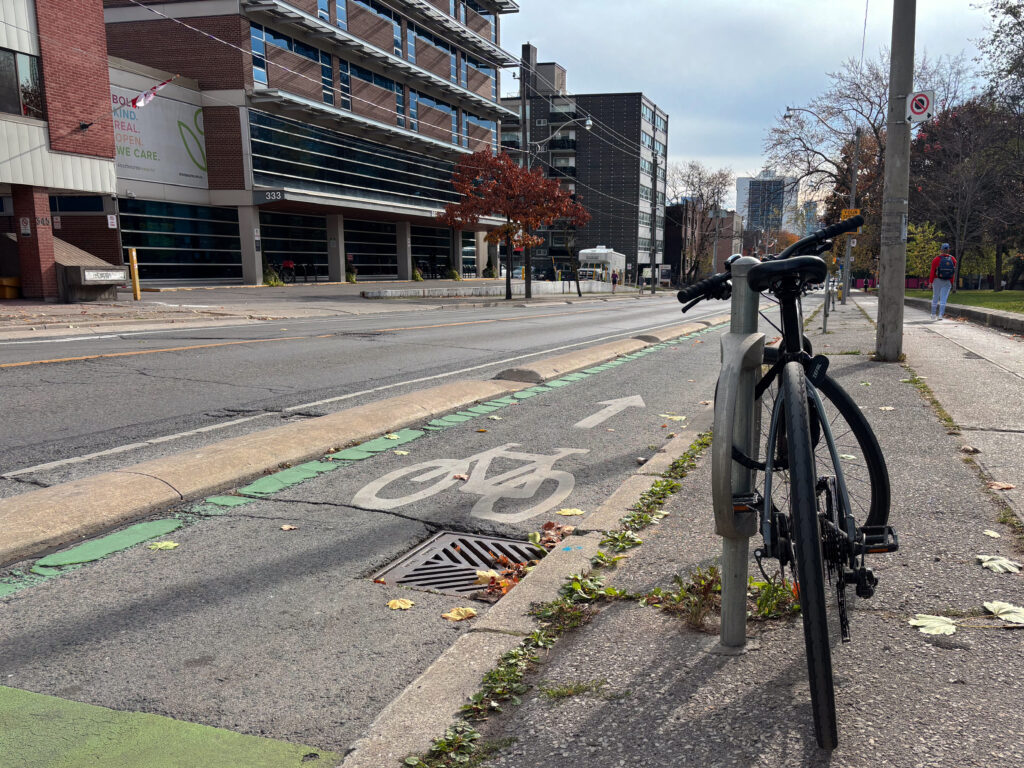
Listen to the whole story here:
Today’s Toronto City Council included a discussion of Premiere Doug Ford’s Bill 212 – Reducing Gridlock, Saving You Time Act – that according to a report released yesterday, would cost taxpayers an estimated $75 million. The city staff report made calculations that accounted for both for the tear down of bike lanes and the construction of new roadways.
Bill 212, proposed by Minister of Transportation Prabmeet Sarkaria on Oct. 21, is provincial legislation that aims to “reduce gridlock [and] save time” by allowing the province to tear down municipal infrastructure in order to increase road sizes. In addition, the bill will add complexity to the zoning process for new cycling infrastructure, requiring the city to clear construction of new bicycle lanes with the provincial government.
“There’s no real-life example of the costs being even remotely close to what the City of Toronto is suggesting,” tweeted Ivana Yelich, Ford’s Chief of Staff in response to the city report this morning.
According to the report, Ford’s proposition to remove bike lanes on major streets in Toronto would also cause more harm than good on the road, causing “increased travel times for drivers due to traffic congestion from additional construction that would be necessary to facilitate the removal of existing bike lanes.”
Cyclist fatalities have seen a significant spike in 2024 – six deaths this year, as compared to an average of 1-2 deaths yearly for the last five years, according to Toronto Police Service Statistics. The last five years could be outliers, with road activity being lower due to COVID.
“We get about 1000 calls a year, maybe two of them are cyclist on cyclist collisions, and injuries are rarely severe… What we do see is 99 per cent of the phone calls are cyclists being struck by motorists, and this isn’t whiplash… my whole caseload is dealing with objective orthopedic injury,” said David Shellnutt, founder of The Biking Lawyer LLP.
Cycling infrastructure is one of the leading ways to decrease injuries on the road. A UBC report found that “route infrastructure does affect the risk of cycling injuries, with risk differences of up to 10-fold,” with fully-separated bike lanes being one of the biggest improvements to cyclist safety.
Toronto Mayor Olivia Chow addressed the bill in City Hall today. She came out in support of the report, focusing on what she considers to be a provincial overstep. “Whether you support bike lanes or you don’t, I think it’s important that this council and the people of the city of Toronto have the respect they deserve,” she said.
In response to a question about the report, Chow said that “it reflects the hard work both the staff and city councilors have done through the years in getting these bike lanes approved… what i’ve observed is that there is increasing ridership as time goes on as people get more and more familiar with the bike lane.”
“The long-term results of this change will be less people on bikes and more people in cars causing more congestion,” said Shellnutt. “We need a culture shift. Right now the Premiere is giving us a culture war – a war on cyclists – but we need a cultural shift where driving is treated as a privilege and not a right.”
This article may have been created with the use of AI tools such as Google Docs, Grammarly, and/or Otter.ai for transcription.
